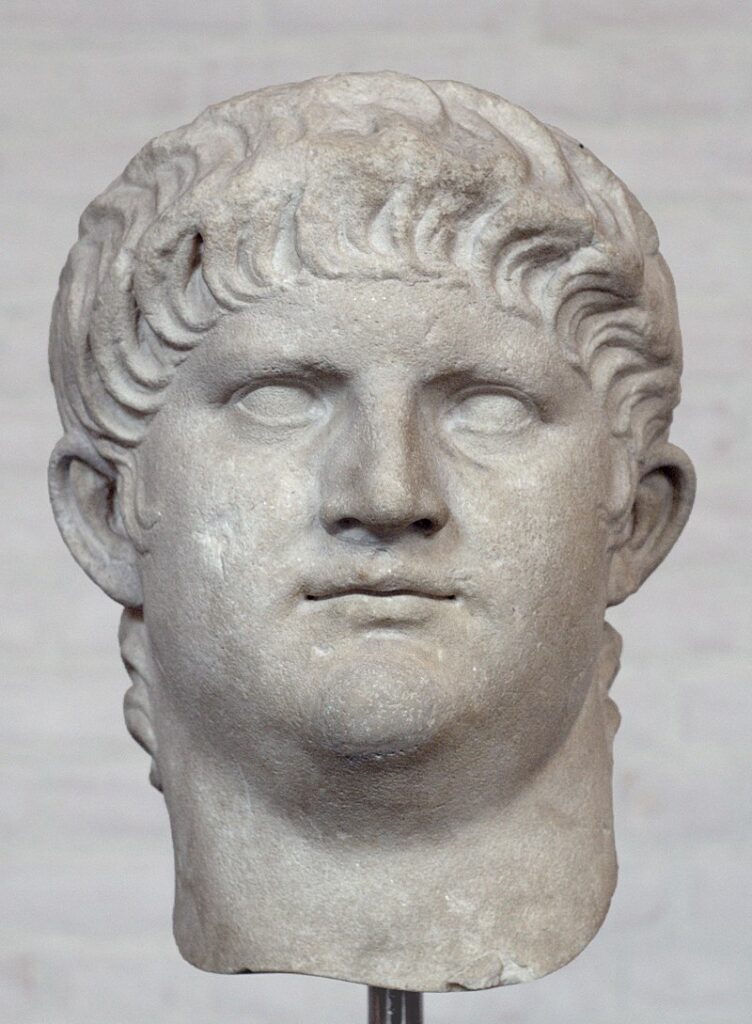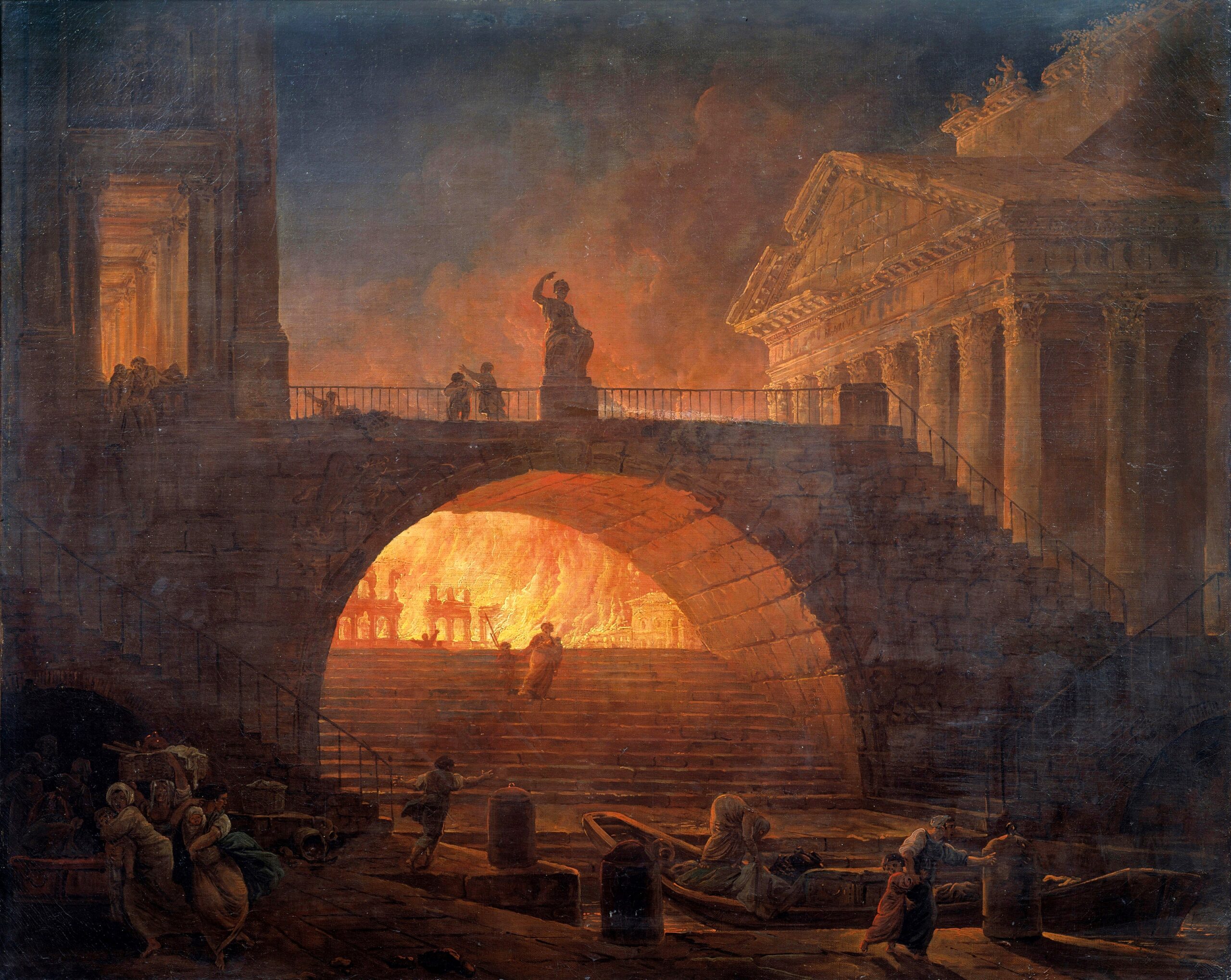Nero, the last emperor of the Julio-Claudian dynasty, has long been synonymous with tyranny and extravagance in the annals of Roman history. His reign, marked by artistic ambition and ruthless politics, has been a subject of debate and fascination. The recent British Museum exhibition sheds new light on this enigmatic figure, challenging long-held perceptions and inviting a reevaluation of his legacy.
Nero’s Rise to Power
Early Life and Ascension

- Birth and Family Background: Born in AD 37 as Lucius Domitius Ahenobarbus, Nero hailed from a lineage deeply entwined with the Roman imperial family. His birth marked the continuation of a dynasty that had shaped the Roman Empire’s political landscape.
- Adoption by Emperor Claudius: In a pivotal turn of events, Nero was adopted by his great-uncle, Emperor Claudius, in AD 50. This adoption not only changed his name to Nero Claudius Caesar Drusus Germanicus but also positioned him as a direct successor to the imperial throne.
- Influence of Agrippina: Nero’s mother, Agrippina the Younger, played a crucial role in his early life. Her ambitious maneuvering in the imperial court was instrumental in securing Nero’s adoption and subsequent rise to power.
The Julio-Claudian Context
- Dynastic Significance: As a member of the Julio-Claudian dynasty, Nero was the great-great-grandson of Augustus, the first Roman Emperor. This lineage bestowed upon him a legacy of power and responsibility.
- Political Dynamics: The Julio-Claudian era was marked by complex political intrigues and familial alliances. Nero’s ascension was a product of these dynamics, reflecting the intricate power plays characteristic of Roman imperial politics.
- Dynastic Challenges: Nero’s rise occurred amidst a backdrop of dynastic rivalries and political machinations, setting the stage for his eventual reign as emperor.
Agrippina’s Role
- Marriage to Claudius: Agrippina’s marriage to Emperor Claudius in AD 49 was a strategic move that brought Nero closer to the throne. Her influence over Claudius was significant in the early years of Nero’s life.
- Co-Regency and Power: Initially, Agrippina wielded considerable power, acting almost as a co-regent during the early years of Nero’s reign. Her presence and influence were prominent in the administration and governance of the empire.
- Eventual Sidelining: Over time, Nero began to assert his independence, leading to a gradual sidelining of Agrippina. This shift in power dynamics marked a critical transition in Nero’s approach to ruling the empire.
Nero’s Reign and the Roman Empire
Governing Style
- Administrative Approach: Nero’s governance was characterized by a blend of artistic patronage and political innovation. He often prioritized cultural and aesthetic projects, reflecting his personal interests in arts and performance.
- Key Policies: Nero implemented several significant policies, including tax reforms and public works projects. He was known for his efforts to beautify Rome and enhance its architectural grandeur.
- Public Perception: While some viewed Nero’s focus on arts and culture as a deviation from traditional Roman values, others appreciated his patronage and the vibrancy it brought to the empire.
The Socio-Political Landscape
- State of the Empire: During Nero’s reign, the Roman Empire was at the height of its power, but not without internal challenges. Social and economic disparities were prevalent, and Nero’s policies often aimed to address these issues.
- Relations with the Senate: Nero’s relationship with the Roman Senate was complex. Initially cooperative, it gradually deteriorated over time, leading to increased tensions and opposition from the senatorial class.
- Elite vs. Popular Support: While Nero faced criticism and resistance from the elite, he enjoyed considerable popularity among the common people, partly due to his public works and entertainments.
Contributions and Failures
- Cultural Contributions: Nero’s reign saw a flourishing of arts and culture. He was a patron of theater, music, and athletic games, and his reign is often remembered for its cultural vibrancy.
- Military and Political Challenges: Despite his cultural achievements, Nero’s reign was marred by military setbacks, including the Boudican Revolt in Britain and conflicts with Parthia. His handling of these conflicts received mixed reviews.
- Downfall Factors: A combination of political missteps, military challenges, and deteriorating relations with the elite contributed to Nero’s eventual downfall. His inability to effectively manage these aspects of his reign led to a loss of support among key factions.
The Great Fire of Rome and its Aftermath
The Catastrophe of AD 64
- Outbreak and Devastation: The Great Fire of Rome in AD 64 was one of the most catastrophic events in the city’s history. It raged for nine days, devastating large parts of Rome and leaving a significant portion of its population homeless.
- Nero’s Alleged Involvement: Historical accounts have long debated Nero’s role in the fire. Some sources, notably those hostile to Nero, suggest he may have started the fire to clear land for his grand architectural plans, including the Domus Aurea (Golden House). However, modern scholarship often views these claims with skepticism.
- Historical Debates: The debate over Nero’s involvement in the fire is emblematic of the challenges in separating fact from fiction in ancient historical accounts. The lack of concrete evidence has led to various interpretations among historians.
Nero’s Response
- Relief Efforts: In the aftermath of the fire, Nero took several measures to aid the affected population. He opened his palaces to provide shelter for the homeless and arranged for food supplies to be distributed.
- Reconstruction Initiatives: Nero initiated a massive reconstruction effort, implementing new building codes and urban planning measures designed to prevent future fires. These included wider streets, the use of non-flammable building materials, and the creation of public spaces.
- Domus Aurea: Despite his relief efforts, Nero faced criticism for building the extravagant Domus Aurea on land cleared by the fire. This project, while architecturally innovative, was seen by many as an indulgence at the expense of the suffering populace.
Impact on Rome and Nero’s Rule
- Effect on Roman Society: The fire had a profound impact on Roman society, exacerbating existing economic and social tensions. It also affected the public’s perception of Nero, with some viewing his response as effective leadership, while others saw it as self-serving.
- Changes in Urban Planning: The reconstruction of Rome introduced significant changes in urban design, many of which had lasting impacts on the city’s development. These changes reflected both practical considerations and Nero’s vision for a more magnificent Rome.
- Influence on Nero’s Popularity: The fire and its aftermath were turning points in Nero’s reign. While his initial response garnered praise, the subsequent extravagance and rumors about his involvement in the fire contributed to declining popularity, especially among the elite.
The Portrayal of Nero in Ancient Sources
Ancient Historians’ Accounts

- Suetonius and Tacitus: Two of the primary sources for Nero’s life are the historians Suetonius and Tacitus. Their accounts have significantly influenced Nero’s historical image.
- Sensational Narratives: These historians are known for their vivid and often sensational narratives. Suetonius, in particular, is noted for his dramatic and sometimes scandalous portrayal of Nero’s personal and public life.
- Context of Writings: It’s important to consider the context in which these historians wrote. Both Suetonius and Tacitus belonged to the senatorial class and wrote after Nero’s death, at a time when the political climate may have influenced their portrayals.
Reliability and Bias
- Fact vs. Fiction: Distinguishing fact from fiction in these ancient accounts is a significant challenge for historians. The lack of contemporary sources and the potential biases of these historians complicate the task.
- Political and Social Influences: The political and social contexts of the time likely influenced the way Nero was portrayed. The hostility of the senatorial class towards Nero, for example, is reflected in the accounts of Suetonius and Tacitus.
- Contrasting Views: While ancient sources often depict Nero negatively, there are also indications of his popularity among the common people, suggesting a more complex picture.
Modern Interpretations
- Contemporary Historians’ Views: Modern historians tend to approach ancient sources on Nero with caution, acknowledging their potential biases and the need for a critical evaluation of their accounts.
- Reassessment of Nero’s Reign: Recent scholarship has sought to reassess Nero’s reign, considering factors like the political, social, and economic context of his time, as well as archaeological evidence.
- Balanced Perspective: The goal of modern historiography is to provide a more balanced perspective on Nero, recognizing his contributions and failures without being swayed by the sensationalism of ancient sources.
Nero ‘s Legacy and Modern Interpretation
Evolving Perceptions
- Historical Transformation: Nero’s image has undergone significant transformation over the centuries. From a tyrannical ruler in ancient accounts to a more nuanced figure in modern scholarship, the perception of Nero continues to evolve.
- Role of Archaeology: Recent archaeological discoveries have provided new insights into Nero’s reign, offering tangible evidence that challenges some of the traditional narratives. These findings have been instrumental in reshaping our understanding of his time as emperor.
- Cultural Depictions: Nero’s portrayal in art, literature, and popular culture has also influenced public perception. These depictions often reflect the prevailing attitudes of the times in which they were created, further complicating his legacy.
Insights from the British Museum Exhibition
- Exhibition Highlights: The British Museum’s exhibition “Nero: the man behind the myth” presented a diverse range of artifacts from Nero’s era, offering a more balanced view of his reign.
- Reinterpretation of Nero’s Image: The exhibition challenges the traditional villainous image of Nero, showcasing aspects of his rule that highlight his contributions to Roman society and culture.
- Public Impact: By presenting a different perspective on Nero, the exhibition has played a significant role in influencing public understanding and sparking renewed interest in this historical figure.
The Role of Recent Research
- Scholarly Reassessment: Modern historians and scholars have been reevaluating Nero’s reign, taking into account a wider range of sources, including archaeological evidence, coinage, and contemporary Roman literature.
- Understanding Nero’s Policies: Recent research has provided a deeper understanding of Nero’s policies and decisions within the context of the political, social, and economic challenges of his time.
- A More Complex Picture: The emerging picture of Nero is that of a more complex and multifaceted leader, whose actions and policies were sometimes innovative and beneficial, and at other times, misguided or detrimental.
Nero’s life and reign, steeped in complexity and controversy, continue to captivate and challenge historians and the public alike. This article, drawing on both ancient texts and modern research, including insights from the British Museum exhibition, invites a deeper understanding of Nero, moving beyond the caricature of a tyrant to reveal a multifaceted ruler of ancient Rome.
Sources:
- Nero research Papers : (12) Nero Research Papers – Academia.edu
- Nero: World History Encyclopedia : Nero – World History Encyclopedia
- British Musueum : Nero the man behind the myth : Nero: the man behind the myth | British Museum
- Britannica : Nero : Nero | Biography, Claudius, Rome, Burning, Fate, Accomplishments, & Facts | Britannica
- JSTOR: Nero search results : JSTOR: Search Results
Share this content:
